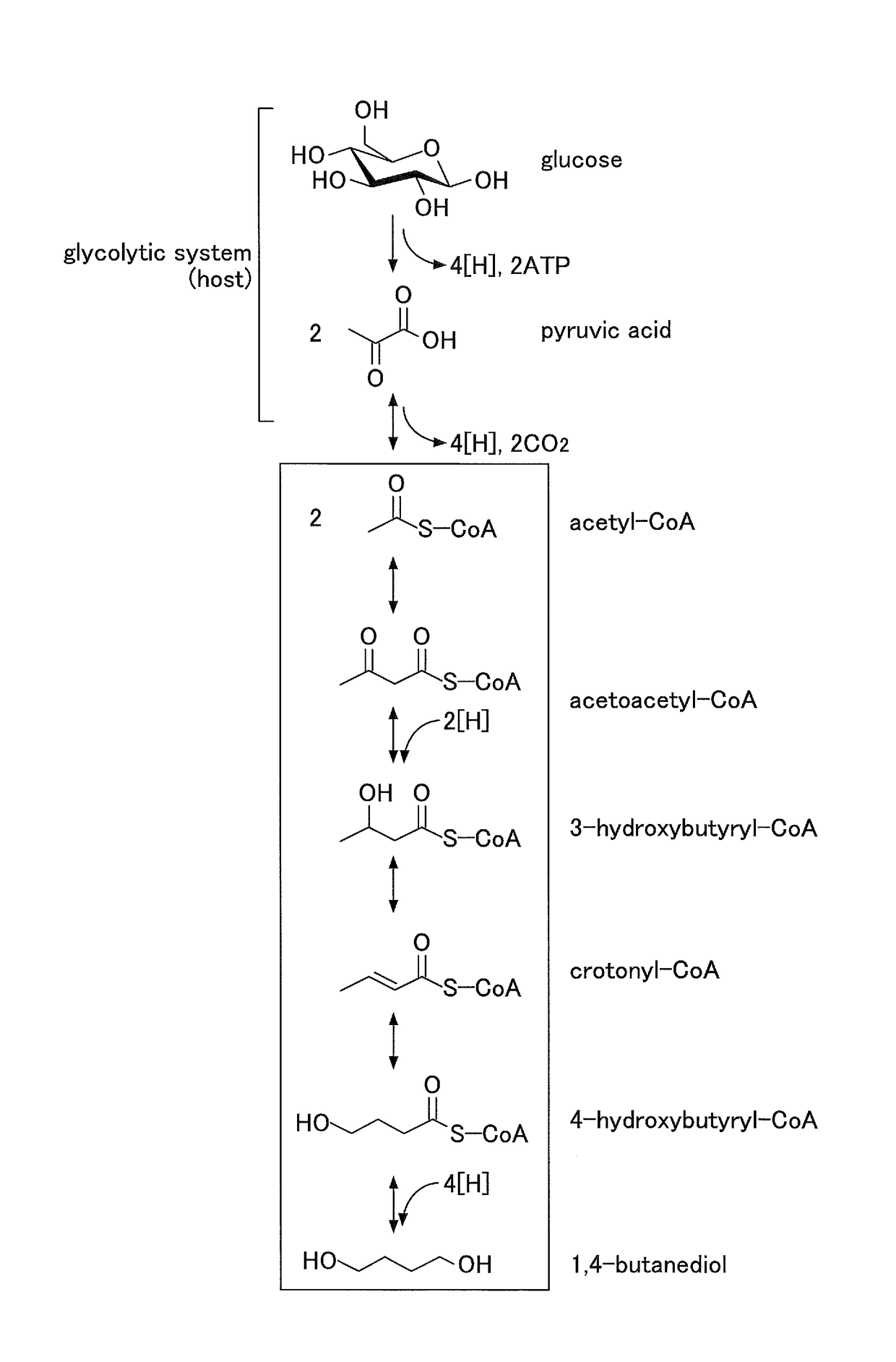Manufacturing method for 1,4-butanediol, microbe, and gene
a technology of 1,4butanediol and manufacturing method, which is applied in the field of manufacturing method of 1,4butanediol, a microbe, and a gene, and can solve the problems of complicated processes of methods described in patent documents 1 and 2 and non-patent documents 1
- Summary
- Abstract
- Description
- Claims
- Application Information
AI Technical Summary
Benefits of technology
Problems solved by technology
Method used
Image
Examples
examples 1 to 3
PRACTICAL EXAMPLES 1 to 3
[0150]A transformed body of JM109 (DE3) was obtained by a method similar to that of Comparative Example 1 in such a manner that transformation was executed with a plasmid provided in such a manner that respective genes of sequence numbers 10, 12, 14, 16, and 17 on plasmid pETBD10-12-14-16-17 were partially substituted by genes of sequence numbers 2, 4, 6, 1, and 8 that coded enzymes corresponding to enzymes that catalyzed respective processes.
[0151]Table 2 illustrates a summary of an envisaged reaction process, an enzyme that catalyzes each reaction process, and a gene that codes such an enzyme in Practical Examples 1 to 3 and Comparative Example 1. Here, a sequence number for a gene corresponds to a sequence number in a sequence listing.
[0152]
TABLE 2Enzyme that catalyzesReaction processcorresponding reaction(1) Process that convertsβ-ketothiolase, acetyl-CoA acetylacetyl-CoA intotransferase, acetoacetyl-CoA synthaseacetoacetyl-CoA(EC number: 2.3.1.9)(2) Pro...
examples 4 to 6
PRACTICAL EXAMPLES 4 to 6
[0154]Moreover, a transformed body of JM109 (DE3) was obtained in such a manner that transformation was executed with a plasmid provided in such a manner that respective genes of sequence numbers 11, 13, 15, 16, and 18 on plasmid pETBD11-13-15-16-18 were partially substituted by genes of sequence numbers 3, 5, 7, 1, and 9 that coded enzymes corresponding to enzymes that catalyzed respective processes.
[0155]A transformed body obtained in each of the respective practical examples and comparative examples was aerobically cultured in 5 mL of an LB medium that contained 100 mg / L of ampicillin at 37° C. for 12 hours. 0.1 mL of a culture solution was implanted to 5 mL of an LB medium that contained 1% of glucose, 100 mg / L of ampicillin, and 0.2 mM of IPTG and aerobically cultured at 30° C. for 48 hours. A supernatant of a culture solution was subjected to high performance liquid chromatography (HPLC: column; Shodex SH-1011 (produced by Showa Denko K. K.), column te...
PUM
| Property | Measurement | Unit |
|---|---|---|
| temperature | aaaaa | aaaaa |
| temperature | aaaaa | aaaaa |
| temperature | aaaaa | aaaaa |
Abstract
Description
Claims
Application Information
 Login to view more
Login to view more - R&D Engineer
- R&D Manager
- IP Professional
- Industry Leading Data Capabilities
- Powerful AI technology
- Patent DNA Extraction
Browse by: Latest US Patents, China's latest patents, Technical Efficacy Thesaurus, Application Domain, Technology Topic.
© 2024 PatSnap. All rights reserved.Legal|Privacy policy|Modern Slavery Act Transparency Statement|Sitemap

